
Pembrokeshire Coast National Park: A Natural Marvel in the UK
Discover the breathtaking beauty and diverse wildlife of Pembrokeshire Coast National Park, the UK's only coastal national park, in the heart of southwest Wales.
Pembrokeshire Coast National Park is a stunning area located in the southwest of Wales. This remarkable park is the only coastal national park in the United Kingdom, offering visitors breathtaking views of rugged cliffs, sandy beaches, and rich wildlife. The park stretches over 620 square kilometers and is home to a diverse range of habitats including estuaries, moorlands, and forests. One of the main attractions of Pembrokeshire Coast National Park is its impressive coastline. The Pembrokeshire Coast Path is a must-visit for anyone who loves walking and hiking. This 186-mile path takes you through some of the most beautiful and varied landscapes in Wales. Along the way, you will encounter charming villages, ancient castles, and picturesque harbors. The park is also a haven for wildlife enthusiasts. You can spot rare birds, seals, and even dolphins in the waters around the park. Skomer Island, located just off the coast, is a particularly popular spot for bird watching. The island is home to thousands of puffins and other seabirds, making it a paradise for bird lovers. For those interested in history and culture, Pembrokeshire Coast National Park has much to offer. The region is dotted with historic sites, including the medieval St Davids Cathedral and the ruins of Pembroke Castle. These sites provide a fascinating glimpse into the rich history of the area. Whether you are looking for outdoor adventure, wildlife spotting, or a peaceful retreat, Pembrokeshire Coast National Park has something for everyone. Its stunning landscapes and rich cultural heritage make it a truly unique destination.
Local tips in Pembrokeshire Coast National Park
- Check the tide times before you go for a walk along the beaches to ensure a safe and enjoyable experience.
- Wear sturdy walking shoes if you plan to hike the Pembrokeshire Coast Path, as some sections can be steep and rugged.
- Bring binoculars for bird watching, especially if you plan to visit Skomer Island to see puffins and other seabirds.
- Visit St Davids Cathedral and Pembroke Castle to get a sense of the area’s rich history and cultural heritage.
- Pack a picnic and enjoy a meal with a view at one of the many scenic spots along the coast.
Pembrokeshire Coast National Park: A Natural Marvel in the UK
Pembrokeshire Coast National Park is a stunning area located in the southwest of Wales. This remarkable park is the only coastal national park in the United Kingdom, offering visitors breathtaking views of rugged cliffs, sandy beaches, and rich wildlife. The park stretches over 620 square kilometers and is home to a diverse range of habitats including estuaries, moorlands, and forests. One of the main attractions of Pembrokeshire Coast National Park is its impressive coastline. The Pembrokeshire Coast Path is a must-visit for anyone who loves walking and hiking. This 186-mile path takes you through some of the most beautiful and varied landscapes in Wales. Along the way, you will encounter charming villages, ancient castles, and picturesque harbors. The park is also a haven for wildlife enthusiasts. You can spot rare birds, seals, and even dolphins in the waters around the park. Skomer Island, located just off the coast, is a particularly popular spot for bird watching. The island is home to thousands of puffins and other seabirds, making it a paradise for bird lovers. For those interested in history and culture, Pembrokeshire Coast National Park has much to offer. The region is dotted with historic sites, including the medieval St Davids Cathedral and the ruins of Pembroke Castle. These sites provide a fascinating glimpse into the rich history of the area. Whether you are looking for outdoor adventure, wildlife spotting, or a peaceful retreat, Pembrokeshire Coast National Park has something for everyone. Its stunning landscapes and rich cultural heritage make it a truly unique destination.
When is the best time to go to Pembrokeshire Coast National Park?
Iconic landmarks you can’t miss
Folly Farm Adventure Park and Zoo
Explore Folly Farm Adventure Park and Zoo for a perfect blend of thrilling rides and captivating animal experiences in Pembrokeshire.
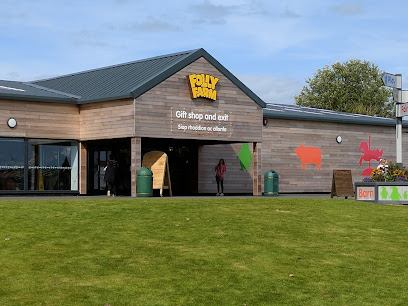
Pembroke Castle
Discover the historical grandeur of Pembroke Castle, a breathtaking medieval fortress in Pembroke, offering unforgettable views and rich stories from the past.

Oakwood Theme Park
Experience the thrill of Oakwood Theme Park, where adventure and family fun come together in the heart of Pembrokeshire, UK.

National Trust - Rhossili and South Gower Coast
Explore the breathtaking landscapes, rich history, and diverse outdoor activities at Rhossili and the South Gower Coast, a true gem of the Welsh coastline.

Devil's Bridge Waterfalls
Explore the stunning waterfalls and scenic trails of Devil's Bridge, a natural wonder in Wales that promises unforgettable experiences for all adventurers.

National Botanic Garden of Wales
Explore the National Botanic Garden of Wales: A stunning botanical paradise showcasing nature's beauty and diversity, perfect for families and nature enthusiasts.

Manor Wildlife Park
Experience the beauty of wildlife conservation at Manor Wildlife Park, Tenby's premier destination for animal lovers and families alike.

Carew Castle & Tidal Mill
Explore the historic Carew Castle & Tidal Mill, a captivating blend of medieval architecture and natural beauty in Pembrokeshire.

Saint Govan's Chapel
Experience the serene beauty and historical significance of Saint Govan's Chapel, a must-visit landmark on the stunning Pembrokeshire coast.

Tenby Castle
Discover Tenby Castle, a historical gem on the Pembrokeshire coast, where stunning views and rich history await every visitor.

Whitesands Bay
Discover the breathtaking beauty of Whitesands Bay, a premier beach destination in Pembrokeshire, perfect for relaxation, surfing, and outdoor adventures.

National Trust - Colby Woodland Garden
Discover the serene beauty of Colby Woodland Garden, a National Trust attraction in Pembrokeshire, perfect for nature lovers and peaceful retreats.

Manorbier Castle
Explore Manorbier Castle: A Historic Fortress Overlooking Pembrokeshire's Stunning Coastline, Perfect for History Lovers and Nature Enthusiasts Alike.

Picton Castle Gardens
Explore the beauty and history of Picton Castle Gardens in Pembrokeshire, a captivating destination filled with stunning landscapes and rich heritage.

Castell Henllys Iron Age Village
Explore the captivating Iron Age at Castell Henllys, a unique living history museum surrounded by breathtaking Pembrokeshire landscapes.

Unmissable attractions to see
Folly Farm Adventure Park and Zoo
Discover a unique blend of adventure and wildlife at Folly Farm Adventure Park and Zoo, perfect for families and animal enthusiasts.

Manor Wildlife Park
Discover the beauty of wildlife at Manor Wildlife Park, where conservation meets adventure in the heart of Tenby's countryside.

The Dinosaur Park Tenby
Explore The Dinosaur Park Tenby, a thrilling theme park with dinosaur attractions, rides, and fun-filled activities for the whole family in beautiful Wales.

Cardigan Castle
Explore the historical marvel of Cardigan Castle, a stunning blend of rich history, picturesque gardens, and captivating architecture in scenic Wales.

Castell Henllys Iron Age Village
Discover the vibrant life of the Iron Age at Castell Henllys Iron Age Village, a captivating living history experience in the heart of Pembrokeshire.

Strumble Head Lighthouse
Discover the breathtaking views and rich wildlife at Strumble Head Lighthouse, a must-visit scenic spot in Pembrokeshire's stunning coastline.

Scolton Manor
Explore the serene beauty of Scolton Manor, a delightful country park and museum offering nature walks and rich local heritage.

Nolton Haven Beach
Experience the breathtaking coastal beauty of Nolton Haven Beach, a serene retreat in Pembrokeshire, perfect for relaxation and outdoor adventures.
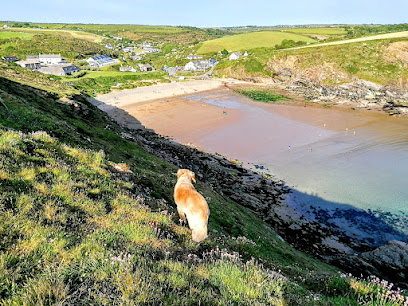
Llys-y-fran Reservoir
Discover the beauty of Llys-y-fran Reservoir, a premier destination for outdoor activities and breathtaking scenery in Pembrokeshire, Wales.

Milford Waterfront
Experience the beauty of Milford Waterfront, where shopping, dining, and scenic views come together in perfect harmony.

Stackpole Walled Gardens
Explore the enchanting Stackpole Walled Gardens in Pembroke, where nature, history, and beauty intertwine in a serene setting.
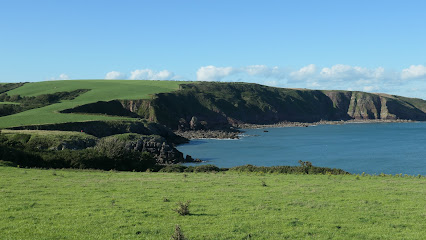
Llawhaden Castle
Discover the rich history of Llawhaden Castle, a captivating medieval ruin nestled in the stunning landscapes of Pembrokeshire, Wales.

Pembroke Dock Heritage Centre
Explore the maritime history of Pembroke Dock at the Pembroke Dock Heritage Centre, a fascinating museum dedicated to local heritage and community.

Blue Lagoon - Abereiddi
Experience the breathtaking beauty of the Blue Lagoon in Abereiddi, a stunning coastal attraction in Pembrokeshire, perfect for adventure and relaxation.

Hangar 5
Experience the thrill of adventure sports at Hangar 5 in Haverfordwest, where fun and excitement await for all ages.

Essential places to dine
Pembrokeshire Coast National Park
Discover Pembrokeshire Coast National Park: A breathtaking blend of rugged cliffs, sandy beaches, rich wildlife & historical treasures in Wales.

The Shed Fish & Chip Bistro
Discover the flavors of Pembrokeshire at The Shed Fish & Chip Bistro – where fresh seafood meets stunning coastal views.

Billycan
Discover the heart of Tenby's culinary scene at Billycan - where breakfast meets vibrant bar culture in a charming coastal setting.
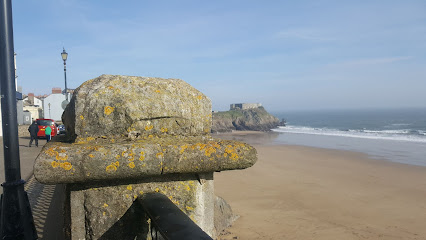
The Stackpole Inn
Discover The Stackpole Inn: A delightful restaurant and inn in Pembroke offering local flavors amidst breathtaking coastal scenery.

The Golden Lion Hotel
Experience warm Welsh hospitality at The Golden Lion Hotel - your perfect spot for dining and relaxation in Newport.
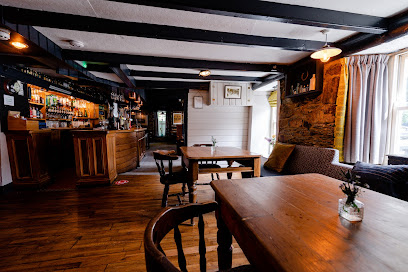
The Nags Head
Discover the flavors of Wales at The Nags Head, Abercych's premier gastropub offering locally sourced dishes and a welcoming atmosphere.

The Griffin
Experience exquisite seafood dining at The Griffin in Dale - where local flavors meet stunning coastal views.

The Mulberry Restaurant
Experience exquisite British cuisine at The Mulberry Restaurant in Saundersfoot - where local flavors meet stunning coastal views.

The Cambrian Inn
Experience Welsh hospitality at The Cambrian Inn in Solva – where comfort meets exquisite British cuisine amidst stunning coastal views.

Watermans Arms
Experience delightful dining at Watermans Arms in Pembroke - where traditional pub charm meets exquisite local cuisine.
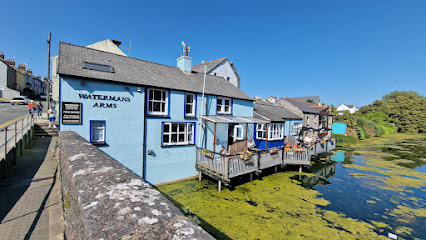
The Brewery Inn
Discover the charm of The Brewery Inn in Cosheston - where local flavors meet warm hospitality in a dog-friendly gastropub.

Best Western Lamphey Court Hotel & Spa
Discover luxury and tranquility at Best Western Lamphey Court Hotel & Spa in Pembrokeshire's stunning natural landscape.

The Angel Narberth
Discover exceptional Welsh cuisine at The Angel Narberth, renowned for its delectable steaks and vibrant atmosphere in Pembrokeshire.

Castle Inn
Discover Castle Inn in Newport: A perfect blend of traditional Welsh cuisine and vibrant local culture awaits you at this charming inn.

Lan y Môr Restaurant Saundersfoot
Experience exquisite British cuisine with breathtaking coastal views at Lan y Môr Restaurant in Saundersfoot.

Markets, malls and hidden boutiques
Pembrokeshire Coast National Park
Discover the breathtaking Pembrokeshire Coast National Park, where stunning cliffs meet sandy beaches and diverse wildlife thrives in a natural paradise.

Vincent Davies
Explore Vincent Davies in Haverfordwest for a diverse shopping experience, featuring everything from home furnishings to delightful toys and a cozy coffee shop.

Withybush Retail Park
Explore Withybush Retail Park: Haverfordwest's premier shopping destination, offering diverse stores, dining options, and a vibrant community atmosphere.

Oriel y Parc Gallery & Visitor Centre
Explore the fusion of art and nature at Oriel y Parc Gallery & Visitor Centre, your gateway to Pembrokeshire's breathtaking landscapes.

Pembrokeshire Retail Park
Discover Pembrokeshire Retail Park, a vibrant shopping destination with a mix of popular brands and local shops in Pembroke Dock, Wales.

Springfield Retail Park
Explore Springfield Retail Park: Haverfordwest's premier shopping destination for fashion, food, and fun.

Coast Aquatics
Explore a vibrant aquatic center in Haverfordwest showcasing tropical fish, aquariums, and essential aquatic supplies for enthusiasts and families.

The Original Factory Shop (Haverfordwest)
Explore unbeatable deals at The Original Factory Shop in Haverfordwest, offering a unique blend of fashion, beauty, and essentials for all budgets.

Window On Wales Ltd
Discover unique gifts and stylish clothing at Window On Wales Ltd, the perfect stop for souvenirs in Solva, Wales.
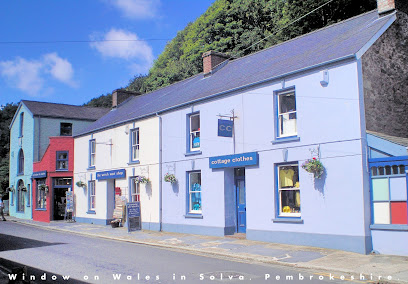
Mountain Warehouse Haverfordwest
Explore the great outdoors with top-quality gear from Mountain Warehouse Haverfordwest, your one-stop shop for camping, skiing, and outdoor clothing.

Next
Discover fashion for all ages at Next in Haverfordwest, offering stylish clothing, accessories, and shoes for the whole family.

West of Wales Art Supplies
Explore West of Wales Art Supplies for a diverse range of quality art and craft materials in Haverfordwest, perfect for every creative endeavor.

Nolton Cross Farm Shop
Experience the authentic flavors of Pembrokeshire at Nolton Cross Farm Shop - a local treasure for fresh produce and artisanal delights.

Hector’s Cards & Gifts
Explore Hector’s Cards & Gifts, a charming destination in Milford Haven, offering unique gifts, handmade candles, and artisanal treasures for every occasion.

Haven Sports Ltd
Discover the thrill of surfing at Haven Sports Ltd in Broad Haven, your one-stop shop for surfboards, wetsuits, and expert advice on the stunning Welsh coastline.
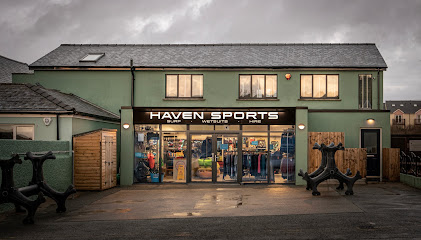
Essential bars & hidden hideouts
Lost Coins
Discover the charm of Lost Coins, the perfect pub in Haverfordwest for food, drinks, and a taste of local culture.

Jolly Sailor
Discover the perfect blend of local flavors and warm hospitality at the Jolly Sailor in Milford Haven, a must-visit restaurant and pub.

Y Cerrig Glas
Experience authentic Welsh hospitality at Y Cerrig Glas, a charming pub in Pembroke Dock, serving local ales and hearty meals in a cozy atmosphere.
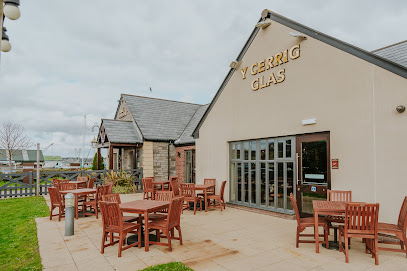
Harbour Inn
Experience the warm hospitality and stunning views at the Harbour Inn, a charming pub in the heart of Solva, perfect for food lovers and adventurers alike.

The Ocean Cafe Bar & Restaurant
Indulge in fresh seafood delights while enjoying breathtaking views at The Ocean Cafe Bar & Restaurant in Broad Haven.

The Griffin
Discover The Griffin in Dale, where seafood meets local charm, and every meal is a celebration of coastal flavors and community spirit.

St. Brides Inn
Discover St. Brides Inn in Little Haven, a cozy pub and family restaurant offering local cuisine, stunning views, and welcoming hospitality on the Pembrokeshire coast.
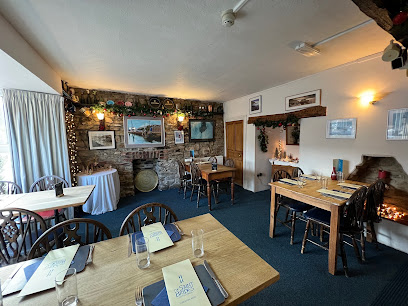
The Castle
Discover The Castle in Little Haven, where local charm meets stunning coastal views and delightful cuisine.

The Wolfe Inn Wolfscastle
Experience authentic Welsh hospitality at The Wolfe Inn, a charming restaurant and inn in the heart of Wolfscastle, perfect for travelers seeking comfort and local flavor.

The Bar
Experience the best of Milford Haven's culinary scene at The Bar, a seafood restaurant with stunning waterfront views.

The Rising Sun Inn
Experience the charm of The Rising Sun Inn in Haverfordwest, where delicious Welsh cuisine meets warm hospitality in a picturesque setting.

The Swan Inn
Discover the charm of The Swan Inn, a cozy pub in Little Haven offering unique local dishes and stunning coastal views.

The Galleon Inn
Experience the charm of The Galleon Inn, where local flavors meet stunning coastal views in Broad Haven.

Friars Vaults
Experience the authentic flavors of Haverfordwest at Friars Vaults, where great food and local brews come together in a cozy pub atmosphere.

The Pelcomb Inn
Experience the charm of The Pelcomb Inn, where authentic Welsh hospitality meets delicious cuisine in the heart of Pembrokeshire.

Local Phrases about Pembrokeshire Coast National Park
-
- HelloShwmae
[shoo-my] - GoodbyeHwyl fawr
[hoil vowr] - YesIawn
[yown] - NoNa
[na] - Please/You're welcomeOs gwelwch yn dda
[oss-gwelvech un tha] - Thank youDiolch
[dee-olch] - Excuse me/SorryMae'n ddrwg gen i
[mine thrug gen ee] - How are you?Sut wyt ti?
[sit wee-ut tee] - Fine. And you?Da iawn. A fi?
[dah yown. ah vee] - Do you speak English?Ydych chi'n siarad Saesneg?
[u-dikh cheen shiarad sice-neg] - I don't understandDw i ddim yn deall
[do-ee thim un thayl]
- HelloShwmae
-
- I'd like to see the menu, pleaseHoffwn weld y bwydlen, os gwelwch yn dda
[hof-oon weld uh boi-dlen, oss-gwelvech un tha] - I don't eat meatDw i ddim yn bwyta cig
[do-ee thim un boi-ta keeg] - Cheers!Iechyd da!
[yech-id dah] - I would like to pay, pleaseHoffwn dalu, os gwelwch yn dda
[hof-oon dah-lee, oss-gwelvech un tha]
- I'd like to see the menu, pleaseHoffwn weld y bwydlen, os gwelwch yn dda
-
- Help!Help!
[help] - Go away!Mynd i ffwrdd!
[mend ee furth] - Call the Police!Ffoniwch yr Heddlu!
[fon-ee-ookh er heth-lee] - Call a doctor!Ffoniwch feddyg!
[fon-ee-ookh meh-dig] - I'm lostRwy'n colli
[roo-in col-lee] - I'm illRwy'n sâl
[roo-in saal]
- Help!Help!
-
- I'd like to buy...Hoffwn brynu...
[hof-oon breen-ee] - I'm just lookingDw i jyst yn edrych
[do-ee just un ed-ruch] - How much is it?Sut mae'n costio?
[sit mine cost-yo] - That's too expensiveMae hynny'n rhy ddrud
[mine hun-nun ree thrud] - Can you lower the price?Allwch chi ostwng y pris?
[al-ook chee ost-oon-y pris]
- I'd like to buy...Hoffwn brynu...
-
- What time is it?Beth yw'r amser?
[beth yoo-r am-sair] - It's one o'clockUn o'r gloch yw hi
[een or gl-och yoo hee] - Half past (10)Hanner awr (10)
[han-air aoor (10)] - MorningBore
[bor-eh] - AfternoonP'nawn
[pun-oun] - EveningNos
[noss] - YesterdayDdoe
[thoy] - TodayHeddiw
[hed-ee-w] - TomorrowYfory
[u-for-ee] - 1Un
[een] - 2Dau
[dye] - 3Tri
[tree] - 4Pedwar
[ped-war] - 5Pump
[pump] - 6Chwech
[chw-ech] - 7Saith
[sa-ith] - 8Wyth
[ooth] - 9Naw
[now] - 10Deg
[deg]
- What time is it?Beth yw'r amser?
-
- Where's a/the...?Lle mae'r...?
[thle my-r] - What's the address?Beth yw'r cyfeiriad?
[beth yoo-r kuh-vay-ree-ad] - Can you show me (on the map)?Allwch chi ddangos i mi (ar y map)?
[al-ook chee than-goss ee mee (ar ee map)] - When's the next (bus)?Pryd yw'r nesaf (bws)?
[pr-uhd yoo-r ne-sav (boos)] - A ticket (to ....)Tocyn (i ....)
[tock-in (ee)]
- Where's a/the...?Lle mae'r...?
History of Pembrokeshire Coast National Park
-
Pembrokeshire Coast National Park is rich in ancient history, with evidence of human settlement dating back to the Mesolithic period. Among the most notable sites are the Neolithic burial chambers like Pentre Ifan, an impressive dolmen constructed around 3500 BCE. These ancient monuments offer a glimpse into the early inhabitants' sophisticated burial practices and their reverence for the landscape.
-
During the Iron Age, the region saw the construction of numerous hill forts, such as Castell Henllys. This reconstructed Iron Age settlement allows visitors to step back in time and experience life as it was over 2,000 years ago. These forts were strategically placed to offer defense and control over the surrounding landscapes, showcasing the advanced social organization and engineering skills of the Celtic tribes.
-
The Roman Empire left its mark on Pembrokeshire, with the construction of roads, forts, and trading posts. The remains of the Roman fort at Moridunum (modern-day Carmarthen) illustrate the Romans' significant presence and their efforts to control and integrate the area into their vast empire. Artefacts and remnants from this period provide insight into the daily lives and military strategies of Roman soldiers stationed in the region.
-
The medieval period saw the erection of numerous castles along Pembrokeshire's coast to defend against invasions. Pembroke Castle, a grand Norman fortress, played a crucial role in the region's history, including serving as the birthplace of Henry VII, founder of the Tudor dynasty. These castles not only served military purposes but also became centers of administration and local governance.
-
Pembrokeshire's coastline has a storied maritime history, from ancient trading routes to the age of piracy. The town of Fishguard, for example, was the site of the last invasion of Britain in 1797, when a French force landed but was famously repelled by the local militia and townspeople. Maritime heritage sites along the coast reveal the region's longstanding relationship with the sea, including shipwrecks, lighthouses, and bustling ports.
-
Christianity has deep roots in Pembrokeshire, with St. David's Cathedral being a major pilgrimage site since the early medieval period. St. David, the patron saint of Wales, established a monastic community here in the 6th century, and the cathedral built in his honor remains a significant spiritual center. This religious heritage is reflected in the numerous ancient churches, chapels, and holy wells scattered throughout the national park.
-
The cultural fabric of Pembrokeshire is enriched by its traditional festivals and events. The Fishguard International Music Festival, for example, celebrates the region's musical heritage, while local agricultural shows highlight the rural lifestyle and community spirit. These events offer visitors a unique opportunity to experience the vibrant culture and traditions that have been passed down through generations.
Pembrokeshire Coast National Park Essentials
-
Pembrokeshire Coast National Park is located in the southwest of Wales. The nearest international airports are Cardiff Airport and Bristol Airport. From Cardiff, you can take a direct train to Haverfordwest or Pembroke Dock, which are the main gateways to the park and the journey typically takes around 2 to 3 hours. Alternatively, you can drive; the park is well-connected by the M4 motorway and A roads. Coach services like National Express also operate routes to towns within the park.
-
Once within Pembrokeshire Coast National Park, you can use local buses operated by companies like Pembrokeshire County Council's 'Puffin Shuttle', 'Strumble Shuttle', and 'Coastal Cruiser' services which cover various parts of the park. Taxis are available but can be pricey. Renting a car offers the most flexibility, especially for exploring remote areas. For the more adventurous, cycling is a popular option and there are plenty of bike rental shops and cycling routes.
-
The official currency in the United Kingdom is the British Pound Sterling (£). Credit and debit cards are widely accepted in most hotels, restaurants, and shops within the park. It's a good idea to carry some cash, especially in more remote areas or small establishments that might not accept cards. ATMs are available in larger towns such as Haverfordwest, Tenby, and St. Davids.
-
Pembrokeshire Coast National Park is generally a very safe destination for tourists. However, as with any travel destination, it's wise to take standard precautions. Avoid isolated areas at night and keep an eye on your belongings in crowded places. There are no specific high-crime areas targeting tourists, but always stay vigilant. Coastal paths can be dangerous in poor weather, so always check forecasts and wear appropriate footwear.
-
In case of emergency, dial 999 for police, fire, or medical assistance. The nearest hospitals with A&E departments are located in Haverfordwest and Carmarthen. It is advisable to have travel insurance that covers medical emergencies. For minor health issues, there are pharmacies in larger towns where you can purchase over-the-counter medications.
-
Fashion: Do wear comfortable and weather-appropriate clothing, especially for hiking. Layers are advisable as weather can change quickly. Avoid wearing flip-flops on coastal paths. Religion: Do visit St. Davids Cathedral and other religious sites respectfully. Public Transport: Do have exact change for buses and be punctual as services can be infrequent. Don't eat or drink on public transport. Greetings: Do greet locals with a smile or a simple 'hello'. Eating & Drinking: Do try local specialties like Welsh cakes and Pembrokeshire potatoes. Don't leave litter; always use bins provided.
-
To experience Pembrokeshire Coast National Park like a local, try visiting during off-peak seasons to avoid crowds. Join local events and festivals such as the Fishguard Folk Festival or Pembrokeshire Fish Week. For a unique experience, consider staying in a traditional cottage or a local B&B. Explore lesser-known coastal paths and hidden beaches for a quieter experience. Engage with locals at markets and local pubs to learn more about the area's rich history and culture.
Trending Landmarks in Pembrokeshire Coast National Park
-
Folly Farm Adventure Park and Zoo
-
Pembroke Castle
-
Oakwood Theme Park
-
National Trust - Rhossili and South Gower Coast
-
Devil's Bridge Waterfalls
-
National Botanic Garden of Wales
-
Manor Wildlife Park
-
Carew Castle & Tidal Mill
-
Saint Govan's Chapel
-
Tenby Castle
-
Whitesands Bay
-
National Trust - Colby Woodland Garden
-
Manorbier Castle
-
Picton Castle Gardens
-
Castell Henllys Iron Age Village
Nearby Cities to Pembrokeshire Coast National Park
-
Things To Do in Cardiff
-
Things To Do in Waterford
-
Things To Do in Bray
-
Things To Do in Kilkenny
-
Things To Do in Bristol
-
Things To Do in Dublin
-
Things To Do in Bath
-
Things To Do in Chester
-
Things To Do in Liverpool
-
Things To Do in Drogheda
-
Things To Do in Birmingham
-
Things To Do in Cork
-
Things To Do in Stratford-upon-Avon
-
Things To Do in Kinsale
-
Things To Do in Port St Mary













